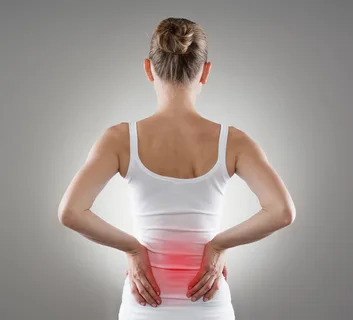
Pain is a common, complicated feeling that can have a big effect on someone’s quality of life. Non-invasive methods have become more and more popular as alternative or complementary therapy, even if pharmaceutical interventions are still frequently utilized to alleviate pain. One such non-invasive method that has showed promise in the treatment of different kinds of pain is transcutaneous electrical nerve stimulation, or TENS, therapy. This article will examine TENS therapy and other non-invasive pain management methods, emphasizing their uses, efficacy, and mechanisms of action.
TENS Therapy: Transcutaneous Electrical Nerve Stimulation
TENS therapy is a non-invasive pain management method that applies low-voltage electrical impulses to specific body parts using a tiny, battery-operated device. By stimulating sensory nerves, these electrical impulses modulate pain signals and alleviate discomfort.
Method of Action
Although numerous suggestions have been put forth, the exact mechanism of action of TENS therapy is still not entirely understood. One theory is that the endogenous opioids—endorphins, enkephalins, and dynorphins—which are the body’s natural painkillers—are stimulated to release by the electrical impulses produced by the TENS machine. By attaching themselves to opioid receptors in the brain and spinal cord, these opioids block the flow of pain signals and provide analgesic benefits.
The “gate control theory” of pain modulation is another mechanism that has been postulated. This theory postulates that non-painful sensory input, like the electrical stimulation provided by TENS therapy, can “gate” or prevent the brain from receiving pain signals. TENS therapy significantly reduces the experience of pain by overloading the brain circuits that convey pain signals.
TENS Therapy Applications
Several forms of acute and chronic pain are treated with TENS therapy, including:
Musculoskeletal Pain:
TENS treatment is frequently used to treat musculoskeletal pain, which includes fibromyalgia, osteoarthritis, back pain, and neck pain. TENS machines offer electrical stimulation that helps ease discomfort and stiffness, decrease inflammation, and relax muscles.
Neuropathic Pain:
Studies have demonstrated the efficacy of TENS therapy in the treatment of neuropathic pain disorders, including peripheral neuropathy, diabetic neuropathy, and post-herpetic neuralgia. TENS units’ electrical impulses have the ability to control aberrant nerve activity and lessen the symptoms of neuropathic pain.
childbirth Pain:
One non-pharmacological alternative for managing pain during childbirth is TENS therapy. TENS devices are a handy option for women looking for non-invasive, natural pain management during labor because of its portability and non-invasive nature.
TENS Therapy’s efficacy
Many variables, such as the nature and intensity of the pain, each patient’s reaction to treatment, and appropriate TENS unit usage, affect how well TENS therapy works to manage pain. TENS therapy has been demonstrated to significantly reduce pain in certain trials, although its effects have been more muted in others.
TENS treatment is usually regarded as safe when administered correctly and can be a useful supplement to all-encompassing pain management techniques. TENS therapy may not be appropriate for everyone, and those with specific medical conditions—like pacemakers, epilepsy, or pregnancy—should speak with a doctor before beginning any new treatment.
Additional Non-Invasive Pain Management Methods
Effective pain management has led to the development of other non-invasive pain reduction methods in addition to TENS therapy. Among these methods are the following:
Acupuncture:
Acupuncture is a traditional Chinese medicine technique in which tiny needles are inserted into certain body sites to encourage energy flow and alleviate pain. It has been demonstrated that acupuncture is useful in treating a variety of pain disorders, including chronic pain.
Massage treatment:
In order to relieve pain, increase blood flow, and lessen muscle tension, massage treatment manipulates the body’s soft tissues. It is possible to customize various massage treatments, such as deep tissue massage, trigger point therapy, and Swedish massage, to target particular pain complaints.
Heat and Cold Therapy:
These easy-to-use, non-invasive pain management methods are both efficient and effective. While cold therapy, such as ice packs or cold compresses, can reduce inflammation and numb discomfort, applying heat—such as warm compresses or heating pads—can assist relax muscles and relieve stiffness.
Physical Therapy:
In order to increase function, strength, and mobility while lowering discomfort, physical therapy uses stretches, exercises, and manual treatments. Treatment regimens are customized by physical therapists to target individual pain sensations and underlying musculoskeletal conditions.
In summary
Safe and efficient alternatives for treating both acute and chronic pain are provided by non-invasive pain management methods, such as TENS therapy and other modalities. These methods reduce pain symptoms without requiring intrusive surgeries or pharmaceutical interventions by utilizing the body’s natural healing mechanisms. People can enhance their quality of life and lessen their dependency on drugs by implementing non-invasive pain relief methods into all-encompassing pain management plans. Healthcare professionals must inform patients about the available non-




